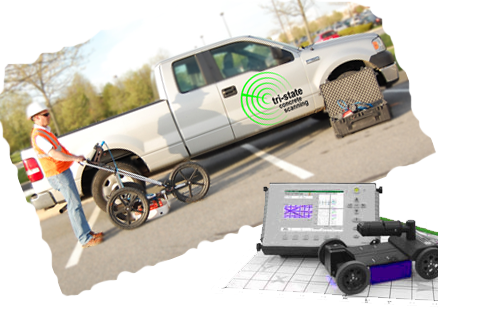RainierGPR Service Areas: Top Concrete Scanning Services Throughout Regions
RainierGPR Service Areas: Top Concrete Scanning Services Throughout Regions
Blog Article
Concrete Scanning: An Essential Step In The Direction Of Making Sure Structural Stability and Security
In the realm of construction and framework upkeep, the value of concrete scanning can not be overemphasized. By utilizing sophisticated technology and approaches, concrete scanning serves as a crucial device in making sure that the stability and safety of buildings and bridges are maintained to the greatest standards.
Importance of Concrete Scanning
Concrete scanning plays a crucial duty in making sure the structural integrity and safety and security of structures and infrastructure tasks. By making use of sophisticated technologies such as ground-penetrating radar (GPR) and electro-magnetic induction, experts can non-destructively examine concrete frameworks to discover potential issues, spaces, embedded things, and reinforcement layout. This procedure enables very early detection of anomalies that might compromise the security of a structure, avoiding expensive damages and making certain the security of passengers.
Prior to drilling, cutting, or coring into concrete, scanning aids determine the specific places of rebar, post-tension cable televisions, and various other embedded aspects, reducing the risk of unintended hits that could lead to architectural weak points. In addition, concrete scanning aids in high quality control by confirming the density of concrete covers and discovering any kind of discrepancies that may impact the general durability of the structure.
Innovation for Concrete Examination

Benefits of Very Early Discovery
Timely detection of structural concerns can significantly reduce threats and make certain the longevity of building jobs. By recognizing possible problems at an early stage in the building and construction procedure, stakeholders can take aggressive measures to address problems prior to they intensify right into bigger and extra pricey troubles. Among the vital advantages of very early detection is the prevention of structural failures, which can position major security risks and click now cause job delays and monetary losses.
Furthermore, early detection allows for prompt fixings and upkeep, which can assist prolong the life expectancy of the structure. By dealing with issues promptly, building and construction groups can prevent expensive repair work or even the demand for early replacement of architectural parts. This positive method not only conserves time and money but additionally improves the general safety and durability of the building and construction job.
Additionally, very early detection can improve task planning and decision-making by providing stakeholders with beneficial insights right into the condition of the framework. Armed with this information, job managers can make educated choices pertaining to building timelines, techniques, and materials, bring about much more successful and effective task end results.
Making Sure Architectural Security
Making sure the architectural security of a building job is vital to its safety and long life. Concrete scanning plays an essential role in ensuring structural security by discovering potential problems such as gaps, delamination, or reinforcement rust that could compromise the stability of the structure over time.
By utilizing sophisticated scanning modern technologies like ground-penetrating radar (GPR) and electromagnetic induction, construction specialists can non-invasively check concrete structures to recognize locations of problem beneath the surface area. This positive method enables the early detection of flaws or weaknesses, enabling timely fixings or support to stop architectural failings.
Regular concrete scanning throughout different building phases and throughout the life cycle of a structure can help preserve its security, alleviate dangers, and make certain the safety of owners. By focusing on structural security with concrete scanning, construction tasks can boost their strength and longevity, ultimately adding to higher safety and security and longevity.

Preventing Critical Failures
Applying routine examinations, such as concrete scanning, can disclose surprise issues like gaps, fractures, or deterioration that can endanger the honesty of a structure. By using sophisticated scanning innovations like Ground Permeating Radar (GPR) or Concrete X-ray, engineers can non-destructively analyze the problem of concrete and recognize weak factors that need reinforcement or fixing.

Verdict
Finally, concrete scanning plays a vital role in making sure structural integrity and security by making use of advanced technology for very early detection of prospective concerns. This aggressive approach helps protect against important failings and ensures the stability of frameworks. It is important to prioritize concrete assessment as a standard method to safeguard the durability and security of structures and facilities.
Concrete scanning plays an essential duty in making certain the architectural honesty and safety and security of buildings and framework tasks. In addition, concrete scanning help in high quality control by validating the thickness of concrete covers my review here and spotting any discrepancies that may affect the general toughness of the framework. Concrete scanning plays a critical duty in ensuring structural security by identifying possible problems such as spaces, delamination, or support rust that could compromise the honesty of the structure over time.

In verdict, concrete scanning plays an essential function in guaranteeing structural stability and security by utilizing advanced modern technology for very early detection of potential concerns.
Report this page